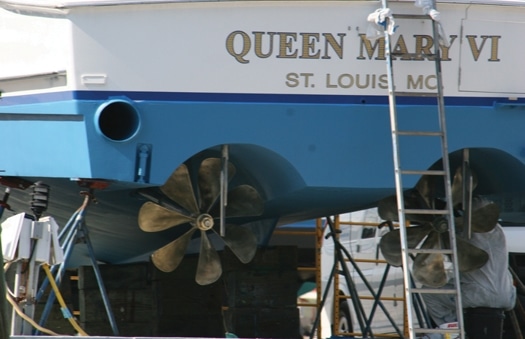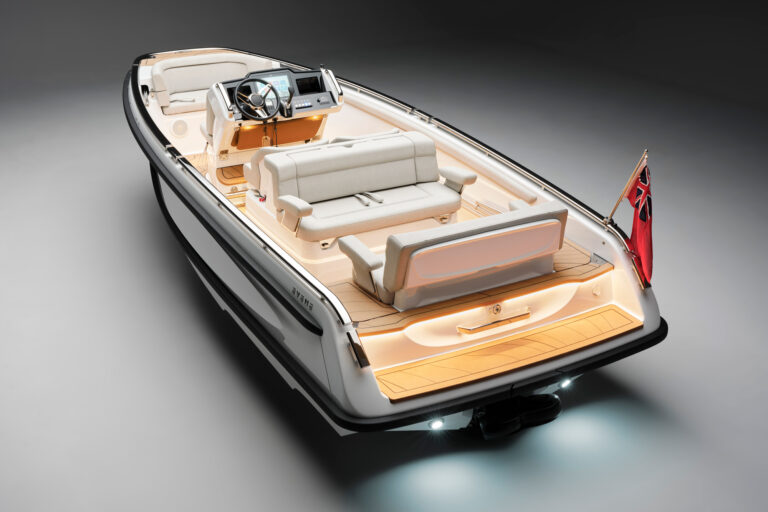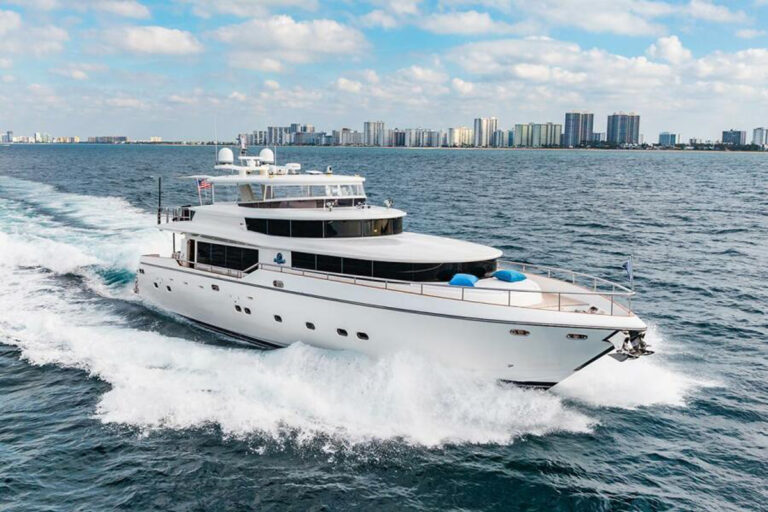
ytgaug09perf525.jpg
The decision between one engine or two can be perplexing, and even for professionals, there’s not always a definitive answer. That’s because it’s not just the engines, but the entire propulsion drive train that must be considered. There’s also a “what if” component that involves both practical and emotional aspects.
Most yachts have two engines, two reduction gears, and two propellers. The reason most often cited for this is redundancy. While that seems a reasonable point, the truth is that most engine failures can be attributed to fuel problems. Unless you’re drawing from separate tanks, filled at separate times from separate sources, fouled fuel can take down both engines in rapid succession. You’ll find that many seagoing vessels, including cargo ships and commercial fishing vessels, operate on a single engine without failure for thousands of hours. They depend on fuel-polishing systems, day tanks, and a good supply of spares in lieu of a second engine. Modern diesel engines, supplied with adequate air and clean fuel, are among the most reliable pieces of machinery to be found.
A second reason for twin engines is the ease of maneuvering. There’s no question that it’s easier with two engines than one, but bow and stern thrusters can compensate for some of that disadvantage.
Yet another reason for dual installations is to split the horsepower between two engines. More correctly, it’s done to divide the power between two propellers. It takes a certain amount of propeller blade area to get the horsepower into the water, so splitting it up means two smaller props rather than a single, larger one. Large, slower turning propellers are generally more efficient than small, faster-turning ones, but large props result in more draft, a compromise that is often unacceptable. For high-speed yachts with lots of horsepower, three engines or even four are not unheard of, for this very reason.
Further to this point, there are more ways to get extra propeller area than installing another engine. Propeller tunnels allow larger diameters without added draft, and custom propellers offer additional blades, higher area per blade (think elephant ears versus bunny ears), or both. There are also the not-so-common but still viable solutions. Let’s pause briefly for a little history lesson. Turbinia, a 104-foot vessel built in 1894, was fitted with a single 2,000-horsepower steam turbine, but was geared to drive three shafts, each carrying three propellers. With her nine propellers, she achieved a then-record 34.9 knots.
Vessels built since then have carried a remarkable variety of drive-train combinations. Some, as with Turbinia, have been built with a single engine driving two or more props. In an inverse of that example, some have two or more engines driving a single propeller. And the occasional bluewater cruising yacht will have one centerline prop driven by a main engine, with one arrangement or another to clutch an auxiliary “get home” engine to that shaft in an emergency.
We’re seeing an increasing interest in diesel-electric and hybrid systems. By using diesels, batteries, and/or solar panels to supply the raw horsepower, and electric motors to drive the propeller shafts, a wide range of choices are available. The question for these vessels is not one engine or two, but what combination will yield the most versatile and efficient system. For larger yachts, it can also be a very sensible way to handle both propulsion and onboard electrical requirements with a single, integrated system.
My personal choice would be twin engines, or maybe even three, for a sportfisherman or a fast cruising yacht. I’d go with a single engine plus a thruster for a long-range cruising yacht. For that superyacht with the helicopter pad, a diesel-electric hybrid system would get my vote. That said, though, there are the intangibles to consider. If it’s a production model and most brokerage buyers have a clear preference for a certain propulsion package, you can better assure your eventual resale value by choosing that option. If the technical considerations indicate that a single engine is best, but your family’s peace of mind depends on having a second engine, so be it.









